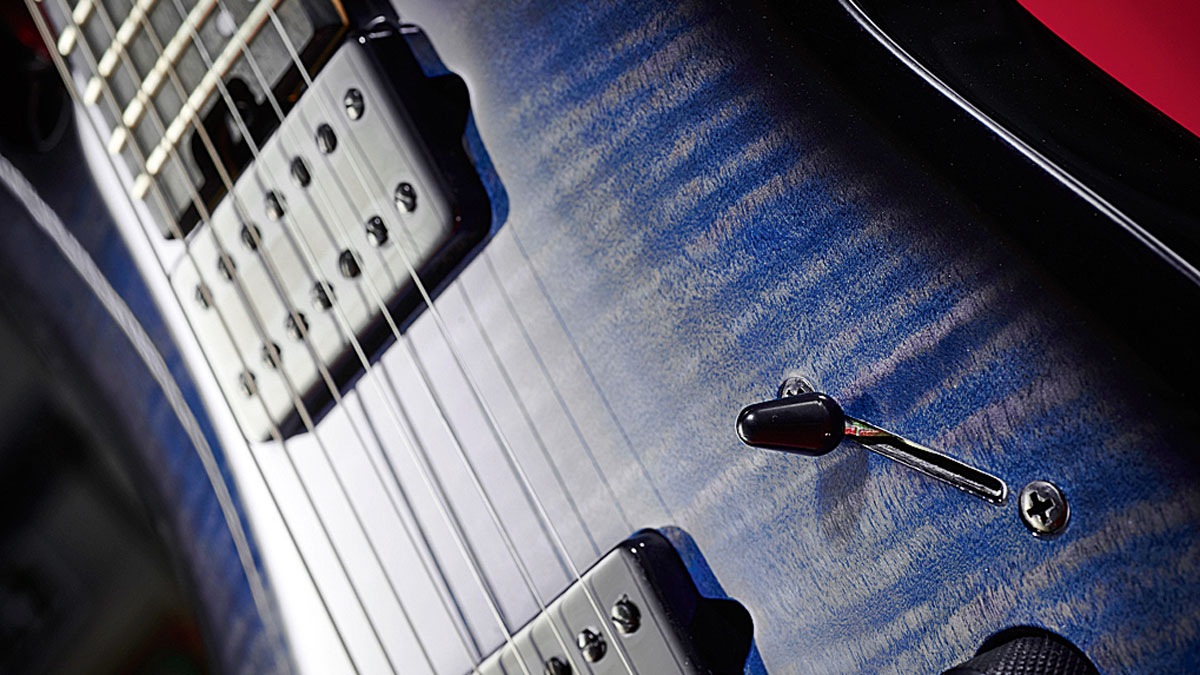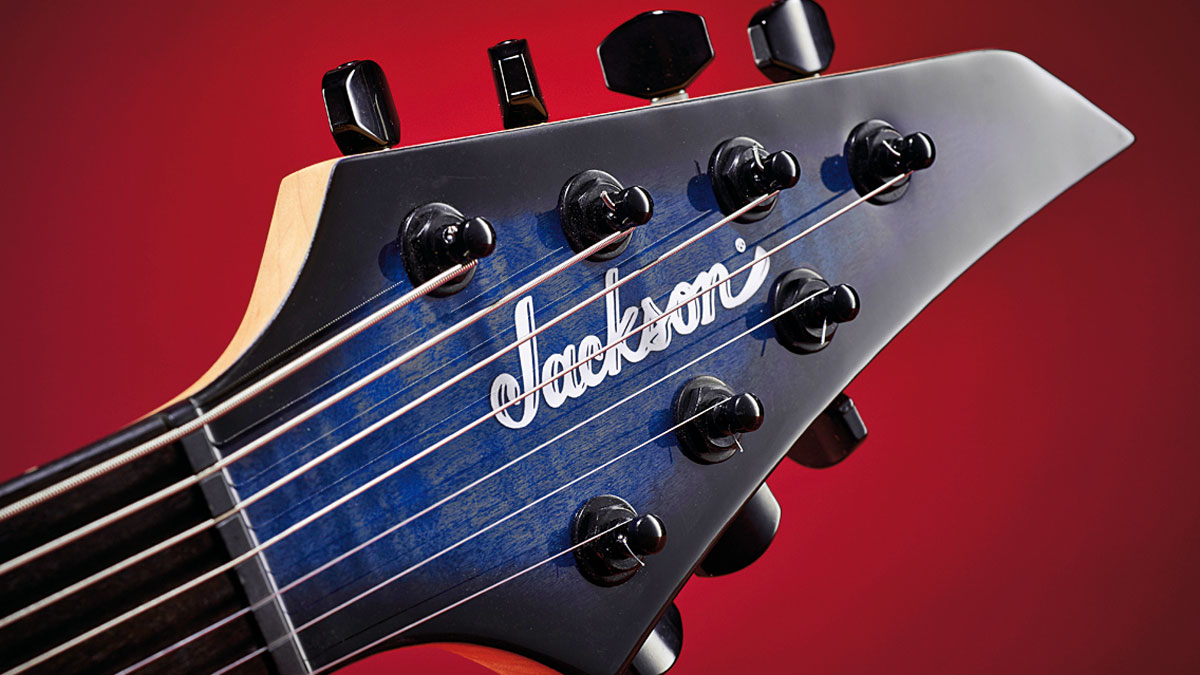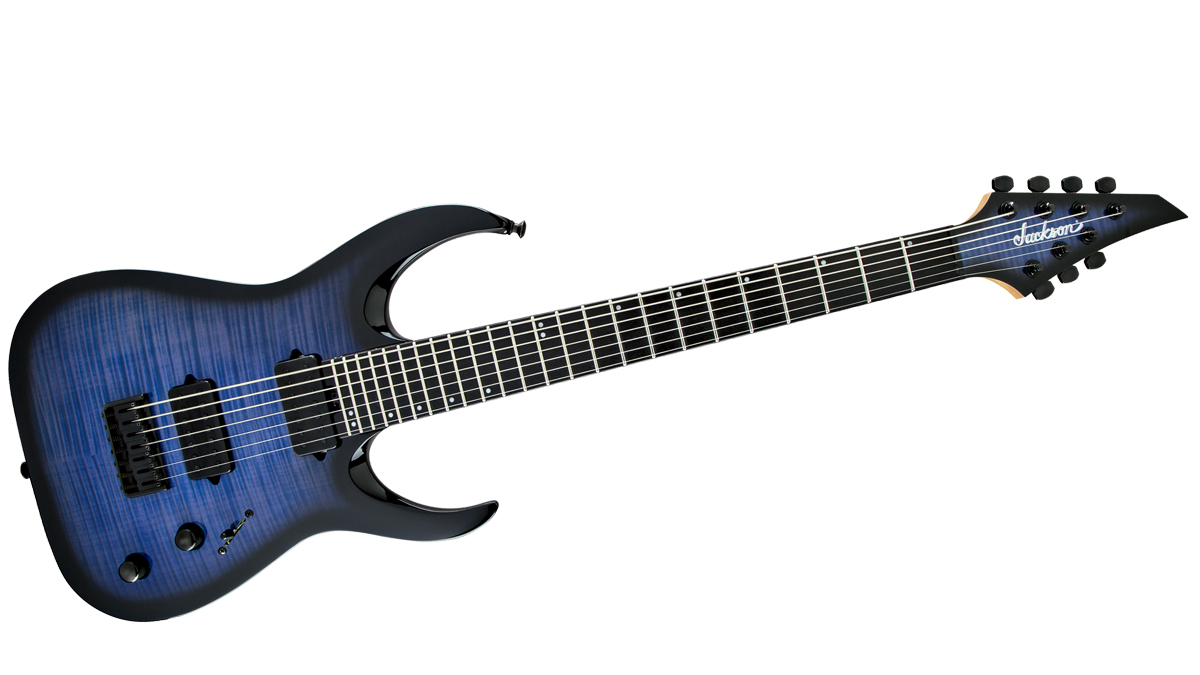MusicRadar Verdict
An S-style metal guitar engineered to a logical conclusion, but you can impress your own sound upon it.
Pros
- +
Massive tone.
Cons
- -
Very few.
MusicRadar's got your back
Misha Mansoor’s signature guitar is built with heavy in mind.
A veritable monster, the Juggernaut boasts a custom-contoured body, painstakingly hewn from basswood and topped with flame maple, a quarter-sawn maple neck, a typically lethal-looking spearhead headstock and two custom-wound Jackson humbuckers.
Pick it up off the rack and you won’t know whether to fret a powerchord or go hunting wild boar in the foothills of the Alps. Choose the former and you’ll find that there’s a ferocity to its tone that makes this a natural fit for any metal guitarist who’s looking to let off some fireworks in their bassist’s register. After all, that is Mansoor’s stock-in-trade.
As a guitarist in Periphery, Mansoor’s day job demands huge, thick, aggressive tone and his signature appointments on the Juggernaut duly reflect his needs. The quarter-sawn neck is more expensive to mill than those flat- or plain-sawn, but that makes it stronger and with a graphite reinforcement and scarf joint, the Juggernaut has an indestructible feel.
A less-than-sexy but nonetheless practical feature that makes the Juggernaut roadworthy is its truss rod, adjustable via a wheel at the heel. Mansoor swears by this, even admitting to adjusting it onstage between songs.

Dim the lights and another of Mansoor’s spec wishes comes true as the dot inlays on the side of the fretboard glow in the dark. They call it Luminlay and it’ll go down well with anyone who has stepped onstage only to feel their way to where their fretting hand should be.
As for the picking hand, Jackson’s string-through hardtail bridge is a tidy, low-profile unit, which is the perfect place to anchor the palm for muting those bruising percussive rhythm parts that Mansoor specialises in. But when we get to the Mansoor’s signature Jackson MM 1 humbuckers and the inventive switching options, we discover a whole new side to the Juggernaut. Let’s call it a sensitive side.
The Juggernaut might be a heavyweight but it cleans up nicely. The MM 1 humbuckers are not your average super-charged pickups, designed to throw out gain and more gain - they have a dynamic, old-school quality. Sure, they’re hot and powerful enough to weaponise your playing in high-gain scenarios, but there’s a sophistication to them that makes perfect sense when you factor in Periphery’s progressive sound.
Pick it up off the rack and you won’t know whether to fret a powerchord or go hunting wild boar in the foothills of the Alps
Via a five-position blade switch, you can select the neck pickup, the bridge pickup, or the bridge and neck pickups together - as standard. But in the second and fourth positions it splits the humbucker’s signal and combines the inner coils and the outer coils, opening up a whole new tonal frontier.
In these split-coil positions the Juggernaut’s clean tones come into their own, offering a little elastic snap and life to arpeggiated chords, with plenty of clarity for the more exotic fringes of Mansoor’s playing. As you bring the gain up, the Juggernaut offers menace on a low seventh-string and a smooth classic-rock tone in its upper registers.

Once you’ve maxed out the gain, the Juggernaut bears its teeth and with a saw-tooth distortion its low-end is a force of nature, with plenty of harmonic response. Shredders will enjoy that neck profile and the Juggernaut’s charismatic, live-wire lead tones.
As pickups go, the MM 1 humbuckers complement hard, percussive playing styles. And that’s the beauty of the Juggernaut. Its DNA is an S-style metal guitar engineered to a logical conclusion, but you can impress your own sound upon it.
It encourages experimentation and for any six-stringers new to seven, that feeling of being outside of your comfort zone is only fleeting - the 16-inch fretboard radius allied to the compensated saddles on the bridge will let you set the action low for a super-playable shred with a tone that’ll make you feel like a giant. And that’s why it’s called the Juggernaut.
Jonathan Horsley has been writing about guitars and guitar culture since 2005, playing them since 1990, and regularly contributes to MusicRadar, Total Guitar and Guitar World. He uses Jazz III nylon picks, 10s during the week, 9s at the weekend, and shamefully still struggles with rhythm figure one of Van Halen’s Panama.
“I called out to Mutt and said, ‘How about this?’... It was a complete fluke": How Def Leppard created a rock anthem - with a little bit of divine intervention
Baby Audio's Smooth Operator spectral balancing plugin goes pro
"It was ugly, like watching a divorce between four people. After a while, I had to get out": Beatles engineer Geoff Emerick on the recording of Abbey Road, track-by-track











